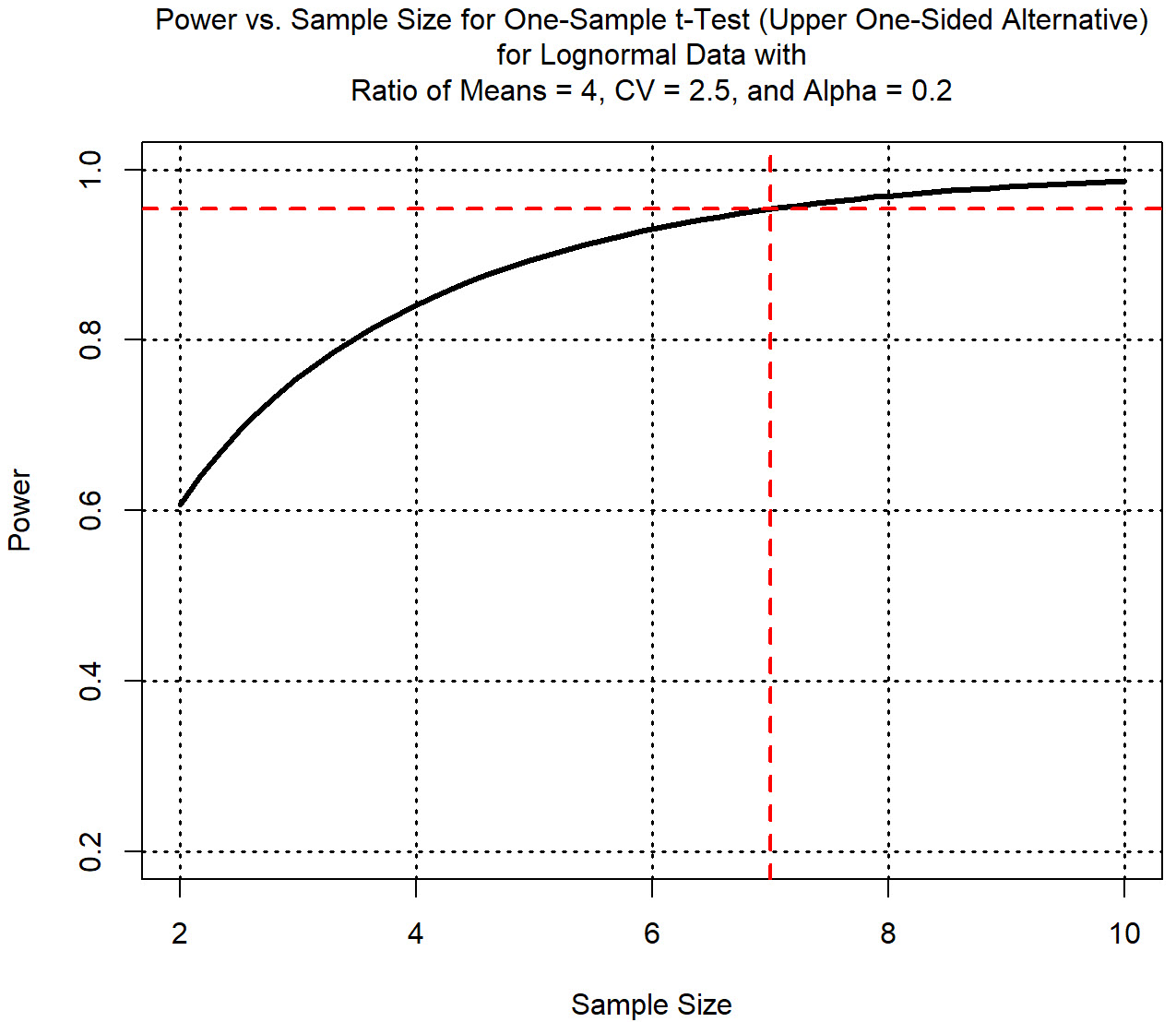
Sample Size Requirement for One-Sample t-Test
This post computes the sample size necessary to achieve a specified power for a one-sample t-test, given the ratio of means, coefficient of variation, and significance level. Calculations are based on the USEPA’s 1996 Soil Screening Guidance Document that discusses sample size calculations to determine whether soil at a potentially contaminated site needs to be investigated for possible remedial action.



